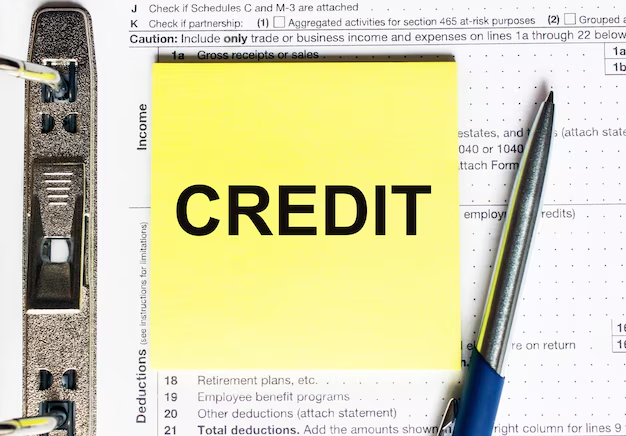Accelerate Your Journey to a Debt-Free Life: How to Escape Credit Card Debt Swiftly
Struggling under the heavy weight of credit card debt can drain your finances and peace of mind. If finding a way out seems overwhelming, you're not alone. Countless individuals face the challenge of mounting balances, high interest rates, and relentless collection calls. Fortunately, there are effective strategies to help you regain control and pay off credit card debt fast. This guide will equip you with practical insights to transform your financial landscape, paving the path toward a debt-free life.
Understanding the Credit Card Debt Cycle
Before jumping into solutions, it's essential to understand how credit card debt can spiral out of control. Credit cards are convenient tools for managing expenses, but when balances accumulate and minimum payments fall short, interest charges escalate exponentially. High interest rates can drastically increase the total debt owed, leading many to feel trapped.
Breaking the Cycle
To break free from this cycle, it's crucial to take decisive steps. Here are some strategies and insights to help you understand your debt and choose a repayment plan that suits your circumstances.
Assess Your Financial Situation
Begin by gaining a comprehensive understanding of your current financial status. This foundational step will inform the rest of your debt repayment strategy.
Create a Detailed Budget
Track Expenses: Record your monthly income and keep track of all expenditures, such as rent, utilities, groceries, and discretionary spending.
Identify Cutbacks: Determine areas where you can cut unnecessary spending, focusing on needs rather than wants.
Maximize Income: Consider supplementary income like freelance work or part-time jobs to boost your financial resources.
Examine Your Debt Portfolio
List all debts comprehensively, including:
- Outstanding Balances: Total amounts owed on each credit card.
- Interest Rates: Note varying rates across different cards.
- Minimum Payments: What's required to stay current.
Prioritize Your Debts
Figuring out which debt to tackle first depends on your financial goals and the nature of your obligations.
Effective Strategies to Eliminate Debt
Having a clear picture of your financial situation, you can proceed to tackle your debt strategically.
The Snowball Method
This method involves paying off debts from smallest to largest, regardless of interest rate, building psychological momentum as you experience quick wins.
Make Minimum Payments: Maintain minimum payments on all your debts to stay current.
Attack the Smallest Debt: Allocate any extra funds to eliminate the smallest debt first.
Roll Payments Forward: Once a smaller debt is cleared, redirect that payment amount to the next smallest debt.
The Avalanche Approach
A more cost-effective method prioritizing debts by highest interest rate.
Focus on the Most Expensive Debt: Direct extra funds towards the debt with the highest interest rate.
Maintain Minimum Payments: Ensure you make minimum payments on your other debts.
Progress Downward: Once a high-interest debt is settled, move to the next highest rate and repeat.
Balance Transfers and Consolidations
Consider balance transfers to a card with a lower interest rate or debt consolidation through personal loans to simplify payments and potentially reduce interest expenses.
Balance Transfer Cards: Look for cards offering low or zero introductory interest rates.
Debt Consolidation Loans: These can merge multiple debts into a single loan with a more manageable interest rate.
Negotiating with Creditors
Open a dialogue with creditors to discuss potential adjustments that can ease repayment.
Request Lower Rates: Some creditors are open to renegotiating interest rates for reliable customers.
Establish a Payment Plan: Discuss the possibility of an installment plan based on your ability to pay.
Building Sustainable Financial Habits
Once you've embarked on a solid repayment plan, develop habits that prevent a return to debt accumulation.
Cultivate an Emergency Fund
Automate Savings
Set up automatic transfers from your checking to your savings account to build cushion for unexpected expenses.
Use Credit Responsibly
Shift the role of credit cards from a dependency to a tool for responsible spending aligned with your budget. Always pay the full balance monthly when possible.
Regularly Review and Adjust Your Budget
Continually monitoring your financial situation and making necessary adjustments can cement lasting financial stability.
Key Takeaways for Swift Debt Elimination
⚡ Assess Your Financial Situation: Start by creating a thorough budget and prioritize your debts.
📈 Choose a Repayment Strategy: Opt for the Snowball or Avalanche method to manage your debt effectively.
🔄 Consider Balance Transfers: Ease your interest burden with strategic transfers or consolidation loans.
🤝 Negotiate with Creditors: Reach out to discuss better terms or alternative payment plans.
🛡️ Build Healthy Habits: Develop an emergency fund and automate savings to avoid future debt.
Empowering Your Debt-Free Journey
Taking control of credit card debt requires commitment and strategic planning. By understanding your financial situation and employing the right repayment strategies, you can effectively diminish your debts and secure a more stable financial future. As you move toward a debt-free life, remember that consistency and vigilance are your greatest allies. Adopt better financial habits, use resources wisely, and keep your motivation strong through all stages of this journey. With determination, financial freedom is within reach.

Related Topics
- Am I Responsible For My Husband's Credit Card Debt
- Are Credit Cards Unsecured Debt
- Can a Pension Be Garnished For Credit Card Debt
- Can Credit Card Debt Be Forgiven
- Can I File Bankruptcy For Credit Card Debt
- Can I Go To Jail For Credit Card Debt
- Can I Negotiate Credit Card Debt
- Can I Negotiate My Credit Card Debt
- Can I Still Use My Credit Card After Debt Consolidation
- Can I Take a Hardship Withdrawal For Credit Card Debt